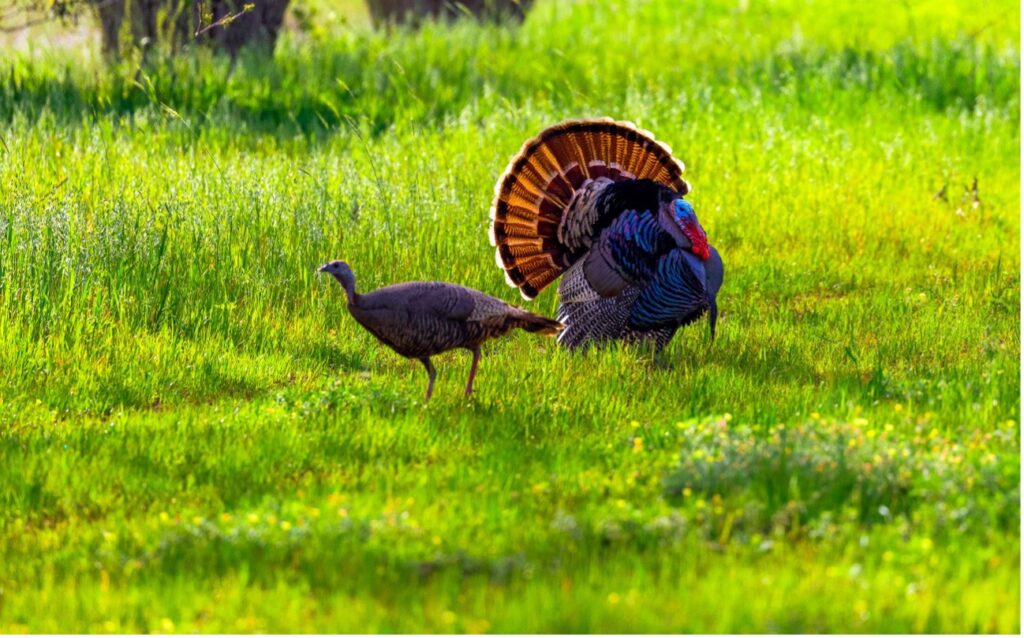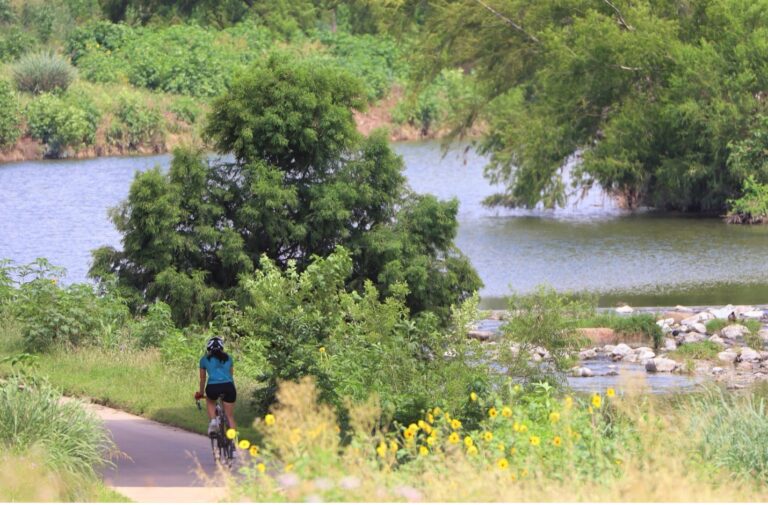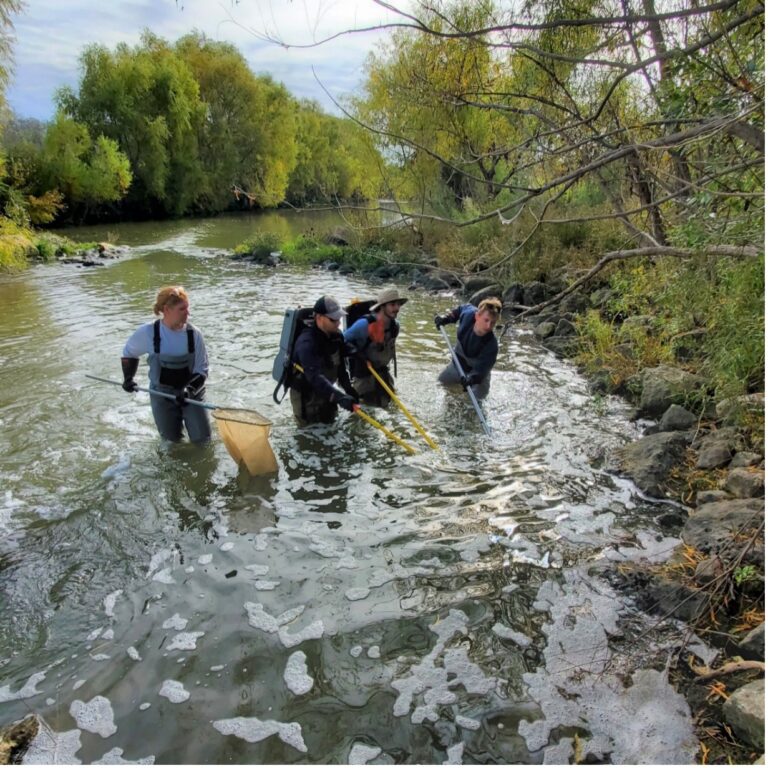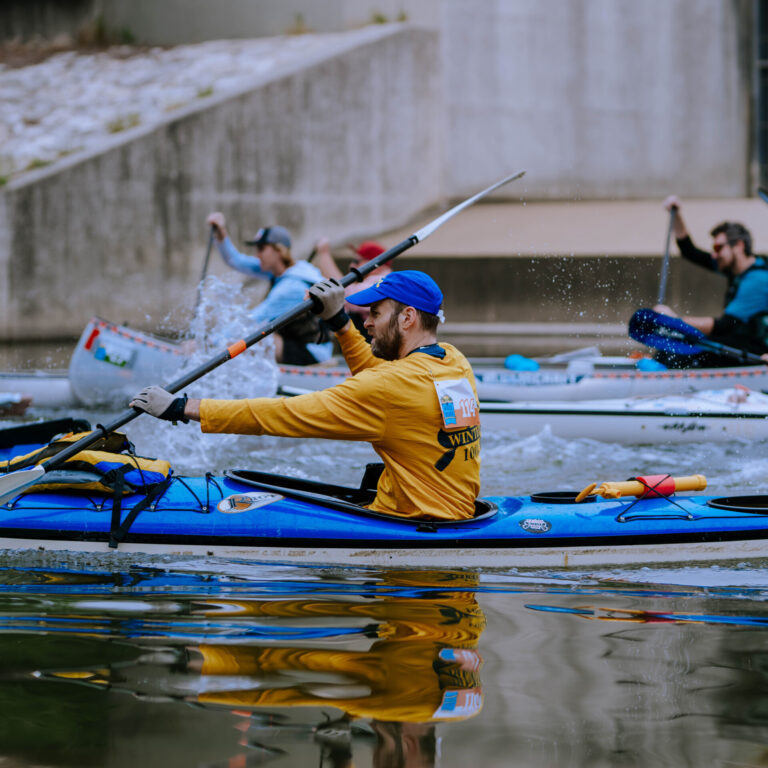Last Updated on February 13, 2024
It’s hard not to grin hearing the gregarious gobble and seeing the showy plumage of this month’s South Texas native species: the Wild Turkey (Meleagris gallopavo). What better time to give thanks for these beautiful birds than this week of nationwide Thanksgiving celebrations? In fact, if you grew up in the United States, your first experience with a turkey was likely tracing the outline of your hand to make a Thanksgiving card. Turkeys have been iconic in the United States for quite some time— many indigenous peoples relied on their meat, and early colonists, including Ben Franklin, wanted the Wild Turkey to be the nation’s emblem. Why are turkeys named after a Eurasian country? Check out this NPR article for the fascinating name origin!
If you grew up in Texas, you’re likely to have seen Wild Turkeys in person at some point because Texas boasts the largest population of these birds in the U.S. In fact, Texas is the only state where you can find three different subspecies of Wild Turkey, with the most common in the San Antonio River Watershed being the Rio Grande Wild Turkey (M. g. intermedia). Get ready to gobble up some fun facts on these MVPs of the San Antonio River Watershed ecosystem!
Turkey Basics
Let’s talk turkey! Wild Turkeys are very different than the ones we buy at the grocery store, which were domesticated in what is now Mexico over 2,000 years ago. These large birds are relatives of pheasants, partridges, grouse, and prairie chickens, and unlike their domesticated counterparts, they can fly—up to speeds of 50 mph! Despite this, they are still one of the largest birds by weight in North America, surpassed only by the trumpeter swan (Cygnus buccinator). The large, plump body of an adult Rio Grande Wild turkey is decorated with nearly 6,000 feathers! What sets this turkey subspecies apart from the others is the color of the body feathers, which have a coppery bronze-green sheen, and the tops of the tail and lower back feathers are rust-brown to tan in color. The Rio Grande Wild Turkey also has longer, skinnier legs, which help it to navigate prairie habitat, and its wing feathers have a distinctive barred white and dark brown pattern. Perhaps the most fascinating feature of adult turkeys is the floppy, fleshy protrusion on the front of their faces called snoods; that’s right, the same name as your grandma’s knit headscarf! Male turkeys (known as toms) use this feature in mating displays, elongating their snood, puffing up chest feathers, flaring their tail feathers into a fan, and strutting around while gobbling fervently. Look out, ladies!
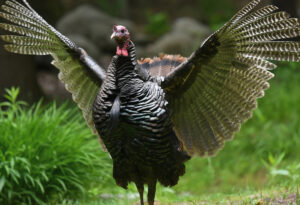
A Wild tom (male turkey) displays its snood prominently!
Where are Wild turkeys found in the San Antonio River Basin?
If you can believe it, one hundred years ago, Wild Turkeys almost disappeared from Texas! Their popularity at the dinner table led to overhunting, and land development wiped out their habitat. Thanks to conservation programs and hunter and landowner support, our great state is now flush with these iconic birds, which inhabit 223 of 254 Texas counties. According to iNaturalist, Wild Turkeys have been spotted in all counties of our San Antonio River Watershed, including much of urban San Antonio, especially near forested waterways like parts of the San Antonio River, Salado Creek, and Medina River, where they can access water and roost in the tall trees. Four turkeys have even been spotted as regular visitors at our Martinez II Wastewater Treatment Plant!
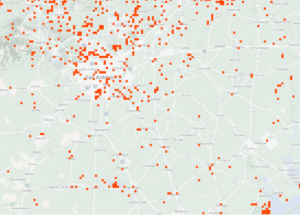
According to iNaturalist, there have been over 235 observations of Wild Turkeys in the primary counties of the San Antonio River Watershed: 171 in Bexar, 48 in Wilson, 4 in Karnes, and 12 in Goliad.
Tips for Spotting Wild Turkeys
Ask your friends and family members who birdwatch or hunt, and you may be surprised to learn that the keen eyes and ears of Wild Turkeys make them one of the most challenging game animals to catch! According to the Texas Parks and Wildlife Department (TPWD), Wild Turkeys can hear the noises of approaching predators (like coyotes, bobcats, owls, eagles, and humans) from up to one mile away!
Your best chance at spotting Wild Turkeys is to head out early in the morning or late in the afternoon when you might see groups of turkeys foraging in an open field, clearing, or roadside that borders a creek or river. As evening sets, look up! You might see turkeys flying to their roosts in a tall grove of trees. And, of course, listen for a “gobble gobble”! If you have a property with large open spaces or a yard bordering the woods, you can try planting nut or berry-producing trees or scattering birdseed or corn. To learn more about how you can attract turkeys, check out The Cornell Lab’s Project FeederWatch.
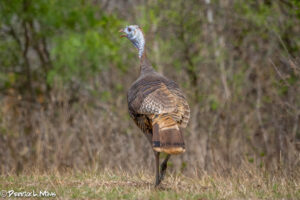
A Rio Grande Wild Turkey at Mitchell Lake Audubon Center Photo Credit: Derrick L. Mims
How to Help Wild Turkeys
To ensure that we continue to have healthy populations of Wild Turkeys for generations to come, check out some ways you can support them!
- Grab your binoculars and go birdwatching! Learning more about Wild Turkeys and witnessing them in their natural habitat at places like Mitchell Lake Audubon Center or River Authority nature parks like Trueheart Ranch and Hendrick Arnold Nature Park. Don’t forget to tag your turkey finds on iNaturalist!
- Are you a landowner with your own turkey habitat? Check our TPWD’s Wild Turkey Management Recommendations or contact your local TPWD Wildlife Biologist.
- Visit South Llano River State Park. Located in the nearby Nueces River Watershed, this park is home to one of the most substantial and oldest winter turkey roosts in Texas!
- Be a Responsible Hunter. If you plan to hunt for turkeys this season, make sure to follow TPWD’s regulations and contribute your valuable data to the MyTexas Hunt Harvest app.
- Support Turkey Habitat. Check out organizations that advance conservation practices necessary to support healthy ecosystems, like The Nature Conservancy.
By taking these actions, we can support these fabulous fowls and the health of ecosystems throughout our watershed. Thank you, turkeys!
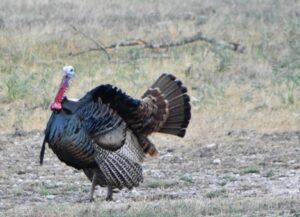
Wild Turkey in Mountain Home, TX Photo Credit: Peter Joseph

